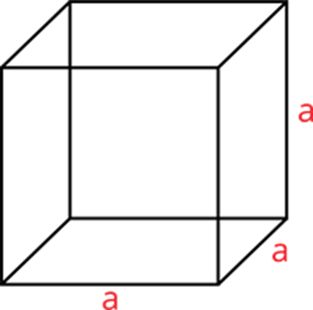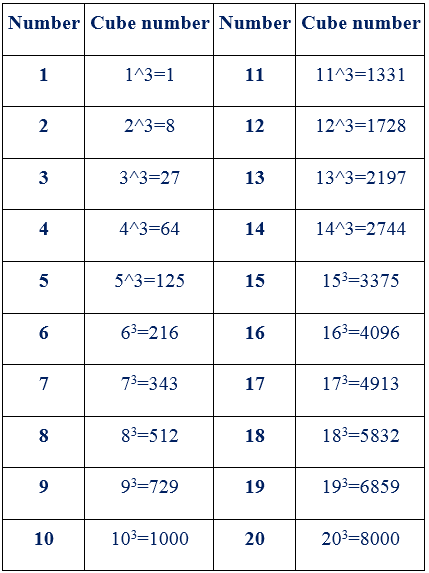- Books Name
- class 8 th Mathematics Book
- Publication
- ReginaTagebücher
- Course
- CBSE Class 8
- Subject
- Mathmatics
Cubes and Cube Roots
Cube Numbers
Cube number
a cube is a 3-dimensional figure. When we multiply a number by itself and then by itself again (thrice), the product is a cube number. It is also called as a perfect cube. That is, if a is a number, its cube is represented by a ^3.
A cube is a solid figure, which has all sides of equal length.

The following table consist of cube numbers of the first ten numbers.

Properties of cube numbers
1. The cube of a positive number is always positive.
Example: 43=4×4×4=64
2. The cube of a negative number is always negative.
Example: (−4)3=(−4)×(−4)×(−4)=−64
3. The cube of every even number is even.
Example: 23=8, 43=64, 63=216, 83=512, ...
Here, 8, 64, 216 and 512 are all even numbers.
4. The cube of every odd number is odd.
Example: 13=1, 33=27, 53=125, 73=343, ...
Here, 1, 27, 2125 and 343 are all odd numbers.
5. If a natural number ends at 0, 1, 4, 5, 6 or 9, its cube also ends with the same 0, 1, 4, 5, 6 or 9, respectively.
Example: (i) 10=1000
6. If a natural number ends at 2 or 8, its cube ends at 8 or 2, respectively.
Example: (i) 23=8–
(ii) 83=512–
7. If a natural number ends at 3 or 7, its cube ends at 7 or 3, respectively.
Example: (i) 33=27
(ii) 73=343
8. A perfect cube does not end with two zeroes.
Example: 103=1000, 203=8000, …
9. The sum of the cubes of first n natural numbers is equal to the square of their sum.
That is, 13+23+33+43+….+n3=(1+2+3+4+…+n)2
Example: 13+23+33=1+8+27=36
(1+2+3)2=62=36
So, 13+23+33=(1+2+3)2
10. Each prime factor of a number appears three times in its cube.
Example: 63=216
Prime factor of 6 = 2×3
Prime factor of 216 = (2×2×2)×(3×3×3)
11. There are only three numbers whose cube is equal to itself.
(i) 03=0×0×0=0
(ii) 13=1×1×1=1
(iii) (−1)3=(−1)×(−1)×(−1)=−1
Example problems for cube numbers
1. Find the cube of 21.
Solution:
If you multiply a number by itself and then by itself again (thrice), the result is a cube number.
21=21×21×21=9261
Therefore, the cube of 21 is 9261.
2. Is 243 is a perfect cube? If not, find the smallest number to divide 243 to make it as a perfect cube.
Solution:
243=(3×3×3)×3×3
Here, factor 3×3=9 is leftover while grouping.
So, 243 is not a perfect cube.
To make it as a perfect cube, divide the given number by the leftover factor 9.
2439=27
Therefore, 9 is the smallest number to divide 243, and the obtained perfect square is 27.

 ReginaTagebücher
ReginaTagebücher
